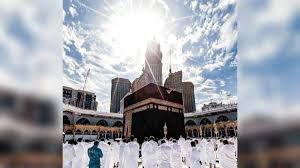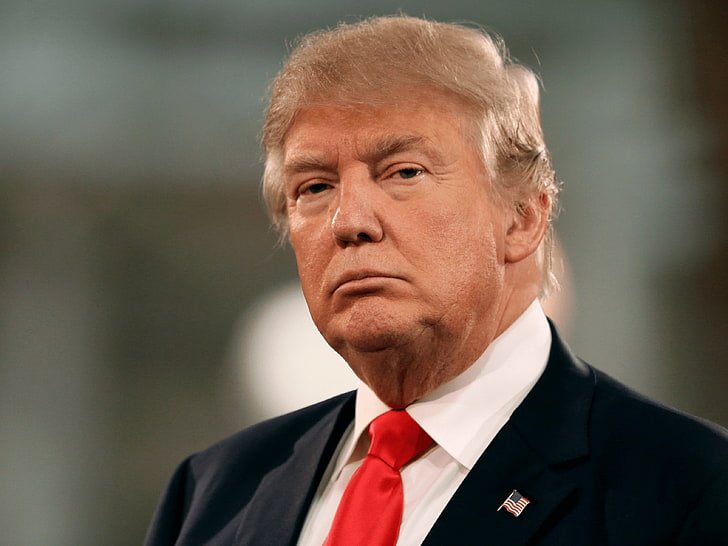Sun Directly Over Kaaba on 15 July 2025: A Rare Celestial Event to Help Muslims Accurately Align Their Qibla
On Tuesday, 15 July 2025, the sun will be directly overhead the Kaaba in Makkah, Saudi Arabia, marking the second and final solar zenith of the year above Islam’s holiest site. This rare astronomical phenomenon will occur with such precision that all upright objects in Makkah at that moment will cast no shadow at all—a striking natural alignment that holds both spiritual and practical significance for millions of Muslims across the globe.
What Is a Solar Zenith and Why Is It Special?
A solar zenith refers to the moment when the sun is positioned directly above a specific location on Earth, reaching an altitude of 90 degrees from the horizon. During this moment, the sunlight hits the ground vertically, and upright objects, such as poles or minarets, will not cast any visible shadow.
For Makkah, this zenith alignment is especially significant. The Kaaba, the cube-shaped structure in the center of the Masjid al-Haram mosque, is the qibla—the direction that Muslims face during prayer. This alignment allows Muslims worldwide to check the accuracy of their qibla direction with the help of a simple observation method, no special tools needed.
When Will This Happen?
According to astronomers, the sun will be at its zenith over the Kaaba at approximately 12:27 PM local time in Makkah on Tuesday, 15 July 2025. This means:
-
The sun will be directly above the Kaaba.
-
Any vertical object in Makkah will not cast a shadow.
-
Observers in other parts of the world can look toward the direction of the sun at their local corresponding time to determine the exact qibla direction.
This natural occurrence is completely predictable and has been tracked for centuries by Islamic scholars and astronomers alike.
Why Does the Sun Pass Over the Kaaba Twice a Year?
Majed Abu Zahra, the President of the Jeddah Astronomical Society, explained the science behind this rare event. He noted that the Earth’s axis is tilted by approximately 23.5 degrees, which causes the sun to appear to migrate between two imaginary lines on the Earth’s surface:
-
The Tropic of Cancer (approximately 23.5° North)
-
The Tropic of Capricorn (approximately 23.5° South)
This movement of the sun throughout the year is what gives us seasons and causes the solar declination to change daily.
Since Makkah is situated at about 21.4° North latitude, the sun passes directly overhead twice each year:
-
Between 27 and 29 May (First zenith)
-
Between 15 and 17 July (Second zenith)
These two solar zenith events are unique opportunities for believers worldwide to verify or adjust their prayer direction toward the Kaaba using natural sunlight.
How Can You Use This Event to Find the Qibla?
If you’re a Muslim living outside Makkah, you can use this solar event to accurately find the direction of the qibla—no compass or app required. Here’s how:
🌞 Step-by-Step Method to Check the Qibla on 15 July 2025
-
Know the exact local time when the sun will be over Makkah:
-
The sun will be directly overhead at 12:27 PM Saudi time (UTC+3).
-
-
Convert this time to your local timezone. For example:
-
Pakistan Standard Time (PST) is UTC+5 → Event will occur at 2:27 PM PST
-
Indonesia (Jakarta, UTC+7) → 4:27 PM local time
-
London (UTC+1 during daylight savings) → 10:27 AM
-
New York (UTC-4) → 5:27 AM
-
-
At the converted time, go outside and observe the direction of the sun.
-
Stand upright and face the sun directly. This is your true qibla direction.
-
You can mark this direction on your wall or floor for future prayers.
Note: This method assumes there are no major obstructions or extreme atmospheric conditions that distort sunlight direction.
Spiritual and Symbolic Meaning
While the solar zenith over the Kaaba has practical benefits, it also carries a deep symbolic and spiritual meaning. For Muslims, the Kaaba is not just a geographic focal point but a sacred center of unity for the global Muslim community (ummah). Every Muslim, no matter where they live, turns toward this single point on Earth in prayer.
This astronomical event is a powerful reminder of the shared connection among Muslims, spiritually and physically oriented toward a common direction. It also emphasizes the marriage of science and faith, where celestial knowledge enhances religious practice without contradiction.
Many Muslims consider this moment to be a time of blessing and spiritual alignment, even if they’re unable to travel to Makkah themselves.
How Accurate Is This Method Compared to Modern Tools?
Modern-day Muslims often rely on digital compasses, mobile apps, or GPS-enabled devices to determine the qibla. While these tools are convenient, they can sometimes be slightly inaccurate due to magnetic interference or technical limitations.
Using the solar zenith method, however, provides a naturally precise direction without relying on electronics or internet connectivity. It’s especially useful in remote areas or regions where modern tools might be unavailable or unreliable.
Solar Zenith Events and Islamic History
The knowledge of the sun passing directly over the Kaaba is not new. Historical Islamic scholars and astronomers, particularly during the Golden Age of Islam, were already aware of such events and used them to develop early astronomical tables, qibla compasses, and mosque orientations.
This practice was especially common in regions where early mosques were built by observing the sun’s direction at the zenith time of Makkah.
It is also reflected in many Islamic architectural marvels, which are aligned with extreme precision toward the Kaaba—often using early versions of this solar method.
When Is the Next Solar Zenith Over the Kaaba?
The next solar zenith over the Kaaba will take place in May 2026. Since this event happens twice every year, Muslims get two opportunities annually to check and realign their qibla using the sun’s position.
Upcoming Dates:
-
27 May 2026
-
15 July 2026 (Expected)
Safety Tips While Observing the Sun
If you plan to use this event to determine your qibla, remember to never look directly at the sun with your bare eyes. Direct sun exposure can permanently damage your eyesight. Use these precautions:
-
Project the sunlight through a small hole onto a flat surface (pinhole method).
-
Use a stick or vertical pole to observe the shadow. When the shadow disappears, it marks the correct direction.
-
Do not use magnifying lenses or binoculars unless they are properly solar filtered.
Global Qibla Day Trend
In recent years, many Islamic organizations have started calling this event “Global Qibla Day”, encouraging Muslims around the world to unite spiritually by adjusting their qibla on this occasion. Mosques, Islamic centers, and online platforms share reminders and step-by-step guides to help believers participate.
Social media also sees a surge in hashtags like:
-
#QiblaDay
-
#SunOverKaaba
-
#NoShadowMakkah
-
#SolarZenith2025
-
#KaabaAlignment
This has become a powerful form of spiritual connection and Islamic education in the digital age.à
____________________________________________________________________________________________________________________________________
IFJ urges SC to review Peca
Read This Article
📌 Conclusion: A Perfect Blend of Faith and Science
The 15 July 2025 solar zenith over the Kaaba is more than just an astronomical occurrence—it’s a global spiritual moment. By observing the sun at a specific time, Muslims everywhere can feel a deeper connection to Makkah and ensure their prayers are offered in the correct direction.
This beautiful alignment of the heavens and the Earth serves as a reminder that Islam embraces both faith and knowledge, using the natural world to guide worship. Whether you’re in Asia, Africa, Europe, or the Americas, this is a rare opportunity to let the sun itself lead you to the qibla.
🌍 Wherever you are in the world, on 15 July 2025, look to the sun—and face Makkah with certainty, unity, and renewed devotion.
🔍 Frequently Asked Questions (FAQs)
1. What time will the sun be directly above the Kaaba on 15 July 2025?
The sun will be at its zenith over the Kaaba at 12:27 PM local time in Makkah (UTC+3).
2. How can I use this to check my qibla?
Simply face the direction of the sun at the exact local time (adjusted to your timezone). This direction points you straight toward the Kaaba.
3. Is it safe to look directly at the sun during this event?
No. Looking directly at the sun can damage your eyes. Use indirect methods like watching shadows or using projection techniques.
4. Does this happen every year?
Yes. The solar zenith over the Kaaba occurs twice each year: once in May and again in July, due to the Earth’s tilt and orbit.
5. Is this event mentioned in Islamic scriptures?
While not directly mentioned in primary Islamic texts, the use of the sun to determine the qibla direction is in line with Islamic teachings that encourage using nature to aid worship.
Sun Directly Over Kaaba on 15 July 2025: A Rare Celestial Event to Help Muslims Accurately Align Their Qibla
On Tuesday, 15 July 2025, the sun will be directly overhead the Kaaba in Makkah, Saudi Arabia, marking the second and final solar zenith of the year above Islam’s holiest site. This rare astronomical phenomenon will occur with such precision that all upright objects in Makkah at that moment will cast no shadow at all—a striking natural alignment that holds both spiritual and practical significance for millions of Muslims across the globe.
What Is a Solar Zenith and Why Is It Special?
A solar zenith refers to the moment when the sun is positioned directly above a specific location on Earth, reaching an altitude of 90 degrees from the horizon. During this moment, the sunlight hits the ground vertically, and upright objects, such as poles or minarets, will not cast any visible shadow.
For Makkah, this zenith alignment is especially significant. The Kaaba, the cube-shaped structure in the center of the Masjid al-Haram mosque, is the qibla—the direction that Muslims face during prayer. This alignment allows Muslims worldwide to check the accuracy of their qibla direction with the help of a simple observation method, no special tools needed.
When Will This Happen?
According to astronomers, the sun will be at its zenith over the Kaaba at approximately 12:27 PM local time in Makkah on Tuesday, 15 July 2025. This means:
-
The sun will be directly above the Kaaba.
-
Any vertical object in Makkah will not cast a shadow.
-
Observers in other parts of the world can look toward the direction of the sun at their local corresponding time to determine the exact qibla direction.
This natural occurrence is completely predictable and has been tracked for centuries by Islamic scholars and astronomers alike.
Why Does the Sun Pass Over the Kaaba Twice a Year?
Majed Abu Zahra, the President of the Jeddah Astronomical Society, explained the science behind this rare event. He noted that the Earth’s axis is tilted by approximately 23.5 degrees, which causes the sun to appear to migrate between two imaginary lines on the Earth’s surface:
-
The Tropic of Cancer (approximately 23.5° North)
-
The Tropic of Capricorn (approximately 23.5° South)
This movement of the sun throughout the year is what gives us seasons and causes the solar declination to change daily.
Since Makkah is situated at about 21.4° North latitude, the sun passes directly overhead twice each year:
-
Between 27 and 29 May (First zenith)
-
Between 15 and 17 July (Second zenith)
These two solar zenith events are unique opportunities for believers worldwide to verify or adjust their prayer direction toward the Kaaba using natural sunlight.
How Can You Use This Event to Find the Qibla?
If you’re a Muslim living outside Makkah, you can use this solar event to accurately find the direction of the qibla—no compass or app required. Here’s how:
🌞 Step-by-Step Method to Check the Qibla on 15 July 2025
-
Know the exact local time when the sun will be over Makkah:
-
The sun will be directly overhead at 12:27 PM Saudi time (UTC+3).
-
-
Convert this time to your local timezone. For example:
-
Pakistan Standard Time (PST) is UTC+5 → Event will occur at 2:27 PM PST
-
Indonesia (Jakarta, UTC+7) → 4:27 PM local time
-
London (UTC+1 during daylight savings) → 10:27 AM
-
New York (UTC-4) → 5:27 AM
-
-
At the converted time, go outside and observe the direction of the sun.
-
Stand upright and face the sun directly. This is your true qibla direction.
-
You can mark this direction on your wall or floor for future prayers.
Note: This method assumes there are no major obstructions or extreme atmospheric conditions that distort sunlight direction.
Spiritual and Symbolic Meaning
While the solar zenith over the Kaaba has practical benefits, it also carries a deep symbolic and spiritual meaning. For Muslims, the Kaaba is not just a geographic focal point but a sacred center of unity for the global Muslim community (ummah). Every Muslim, no matter where they live, turns toward this single point on Earth in prayer.
This astronomical event is a powerful reminder of the shared connection among Muslims, spiritually and physically oriented toward a common direction. It also emphasizes the marriage of science and faith, where celestial knowledge enhances religious practice without contradiction.
Many Muslims consider this moment to be a time of blessing and spiritual alignment, even if they’re unable to travel to Makkah themselves.
How Accurate Is This Method Compared to Modern Tools?
Modern-day Muslims often rely on digital compasses, mobile apps, or GPS-enabled devices to determine the qibla. While these tools are convenient, they can sometimes be slightly inaccurate due to magnetic interference or technical limitations.
Using the solar zenith method, however, provides a naturally precise direction without relying on electronics or internet connectivity. It’s especially useful in remote areas or regions where modern tools might be unavailable or unreliable.
Solar Zenith Events and Islamic History
The knowledge of the sun passing directly over the Kaaba is not new. Historical Islamic scholars and astronomers, particularly during the Golden Age of Islam, were already aware of such events and used them to develop early astronomical tables, qibla compasses, and mosque orientations.
This practice was especially common in regions where early mosques were built by observing the sun’s direction at the zenith time of Makkah.
It is also reflected in many Islamic architectural marvels, which are aligned with extreme precision toward the Kaaba—often using early versions of this solar method.
When Is the Next Solar Zenith Over the Kaaba?
The next solar zenith over the Kaaba will take place in May 2026. Since this event happens twice every year, Muslims get two opportunities annually to check and realign their qibla using the sun’s position.
Upcoming Dates:
-
27 May 2026
-
15 July 2026 (Expected)
Safety Tips While Observing the Sun
If you plan to use this event to determine your qibla, remember to never look directly at the sun with your bare eyes. Direct sun exposure can permanently damage your eyesight. Use these precautions:
-
Project the sunlight through a small hole onto a flat surface (pinhole method).
-
Use a stick or vertical pole to observe the shadow. When the shadow disappears, it marks the correct direction.
-
Do not use magnifying lenses or binoculars unless they are properly solar filtered.
Global Qibla Day Trend
In recent years, many Islamic organizations have started calling this event “Global Qibla Day”, encouraging Muslims around the world to unite spiritually by adjusting their qibla on this occasion. Mosques, Islamic centers, and online platforms share reminders and step-by-step guides to help believers participate.
Social media also sees a surge in hashtags like:
-
#QiblaDay
-
#SunOverKaaba
-
#NoShadowMakkah
-
#SolarZenith2025
-
#KaabaAlignment
This has become a powerful form of spiritual connection and Islamic education in the digital age.
📌 Conclusion: A Perfect Blend of Faith and Science
The 15 July 2025 solar zenith over the Kaaba is more than just an astronomical occurrence—it’s a global spiritual moment. By observing the sun at a specific time, Muslims everywhere can feel a deeper connection to Makkah and ensure their prayers are offered in the correct direction.




